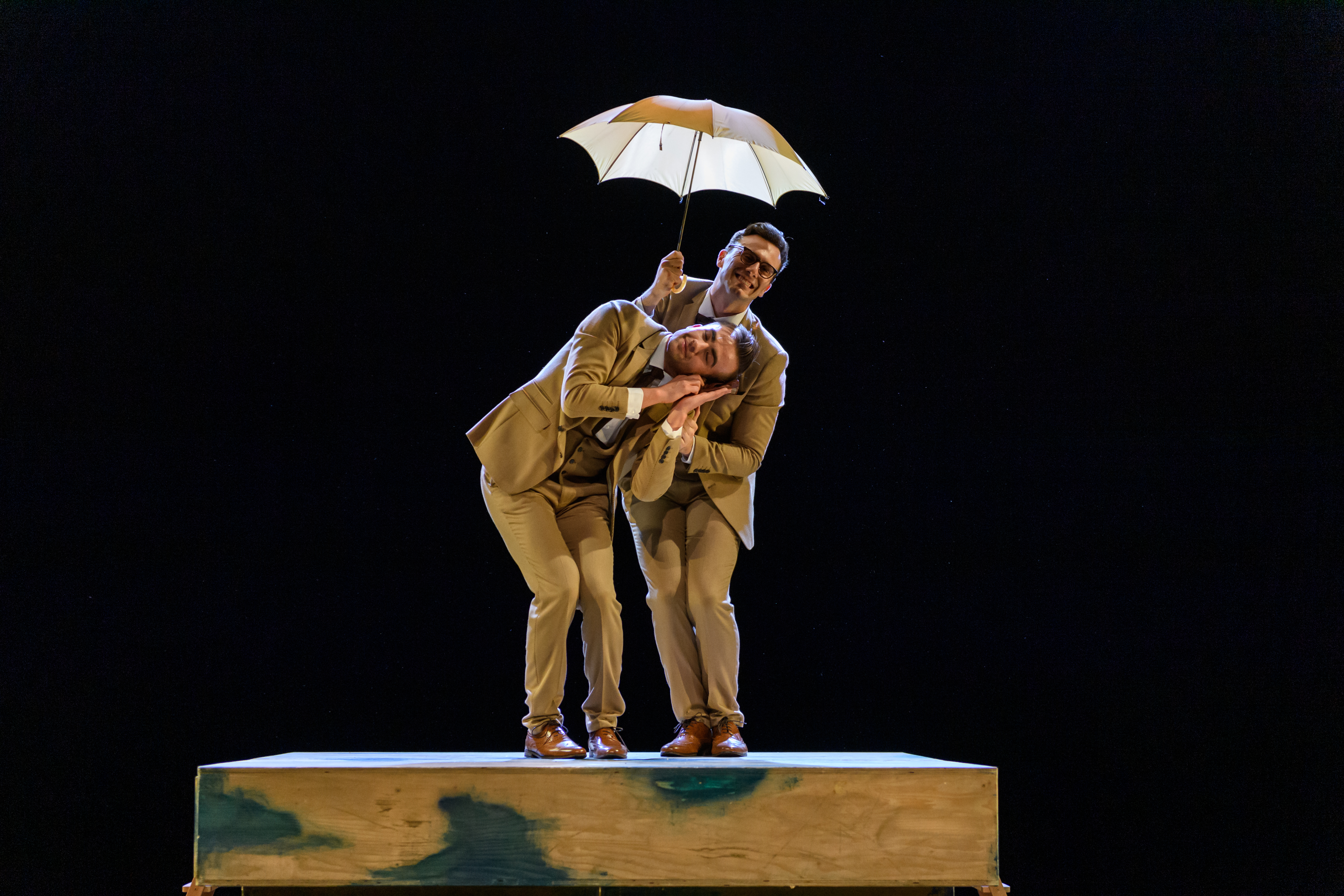Words by Katie Hagan.
Dance and movement are for every-body. We all have stories to tell and memories to bury, and I believe dance is a great, inclusive art form which lets people expel whatever they need to from their soul. The work produced by Deaf Men Dancing (DMD) – a collective of male professional Deaf dancers – is an example of dance which enables just that.
A UK and internationally-acclaimed dance company, DMD exhibited its body of work Time at Laban Theatre, Trinity Laban for Greenwich Performs last week.
Nostalgia permeates the entire performance, and is prevalent in all three pieces. In Hear! Hear! – the strongest work – British Sign Language (BSL) and poetry are woven seamlessly into the choreography, coloured by the odd bits of audio from the days when science was ‘groundbreaking’. At one point the proclamation “one day all deaf people will have access to music!” swamps the stage, drawing attention to the capitalist ‘health’ organisations with god-awful marketing strategies that sold groundless dreams simply for their own profit.
In this piece, the four male performers – Aaron Rahn, Joe Porton, Joshua Kyle-Cantrill and Joseph Fletcher – all wear constrictive harnessed hearing aid boxes. They just have to stand in one line across the stage facing the audience and the image is powerful enough. When it came to the choreography, movement is guided by the restrictiveness of wearing this contraption (which at the time was probably the technology.) The dancers writhe and turn aplenty, demonstrating their desire to be released from something that physically hinders and socially labels them as ‘other’.
Hear! Hear! definitely makes a case for the Deaf community navigating and experiencing a soundless world. But it also brings to light movement’s fundamental role in conveying what cannot be said or understood aurally. Rather than movement existing as an alternative vehicle to create meaning, it is the route to shared understanding. And there was something very special about seeing this unfurl onstage.

The second piece was cheerier in its tone, reminiscent of the slapstick Laurel and Hardy comedies, which DMD director Mark Smith pays homage to. Ten has an almost war-time feel to it; the black-and-white film soundtrack, the sparsely laid table which sits centre stage. The red and white checkered cloth.
Two dancers run through the ‘Ten Commandments for Deaf Awareness’. ‘Thou shalt not label me’, ‘thou shalt keep face to face’, ‘thou shalt not shout’ are phrases paraded on a small board. Immediately after, the duo perform little motifs to illustrate the commandments’ meanings. Ten is a comedic and endearing work textured with physical theatre, mime and BSL. A real joy.
The final piece, The Progress Score, didn’t quite articulate the story we were perhaps hoping for. I say that when really The Progress Score documents an ongoing, despairing reality. As a result of savage government service cuts to schools, children with audio impairments are more likely to face isolation. It’s a pretty hard-hitting subject to tackle and Mark Smith does well to bring this to the forefront of our consciousness.
Yet however strong the topic was, the movement didn’t quite bear equal weight. There were plenty of light-footed, step-turn-step-leaps and full-body sways, which from a dancer’s perspective is the perfect catharsis. The best release. But as with anyone who gorges on something too sweet, the rush soon fades. These movements were repeated too frequently, to the point where the relentless release began to fatigue. However, and a thousand howevers, the strength of the narratives in DMD’s Time must be commended for the important stories they tell. And this gives the work a strong lustre.
In terms of movement, I’d like to end with the following. To be able to sustain a palpable connection with the dancer next to you, without the musical count informing you when to move, to touch, to look, but to simply sense one another body-to-body without any guide but pure feeling is the richest aspect of a sensory dance experience. It brings us back into ourselves, to what is real.
In highlighting these experiences in their choreographies, DMD is inviting a whole load of non-dancers to remember their senses and think differently about how they might use them. And this type of dance, which changes perceptions, is, for me the kind which matters most.
Header Image: Jane Hobson.